A crooked sliding door looks unprofessional and is difficult to use. It can lead to further damage, but understanding the cause is the first step to a simple fix.
A crooked sliding door is often caused by worn-out rollers, a misaligned or bent track, or loose door panel mountings. These issues disrupt the door’s balance, causing it to hang unevenly. This makes the door look slanted and operate poorly.
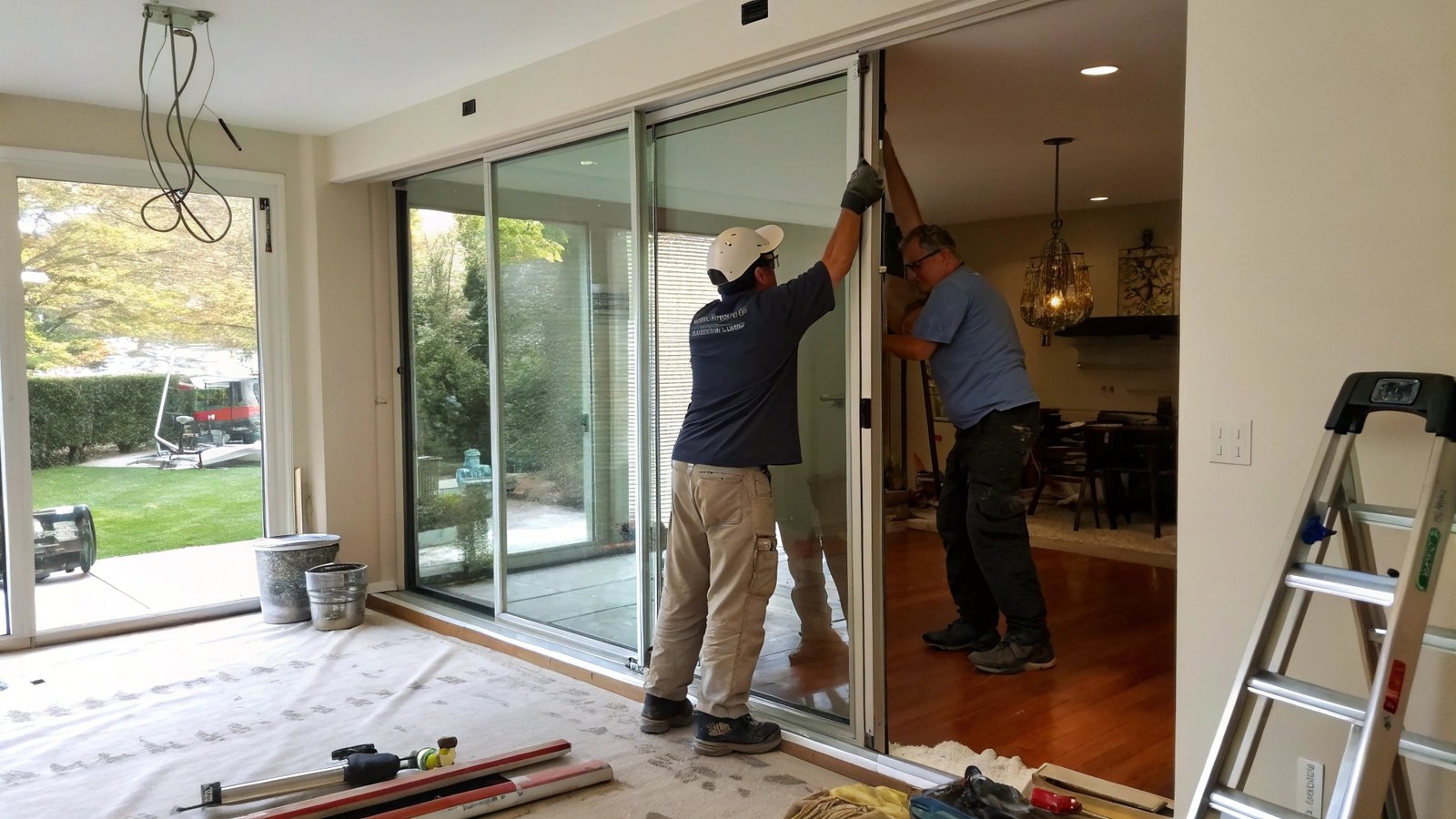
Now that you know the likely causes, you might be wondering about the most frequent issues you’ll face. It’s important to identify the exact problem before you try to fix it. Let’s break down the common problems you will likely encounter with sliding door systems and, more importantly, how to solve them effectively.
What is the common problem with sliding doors?
Sliding doors that get stuck, make noise, or feel wobbly are a big problem. This can lead to customer complaints and damage your reputation for providing quality products.
The most common issues are dirty rollers and a clogged track. Debris like dirt, hair, and dust builds up and obstructs the wheels. This friction is the main reason for most sliding door failures, from strange noises to the door getting completely stuck.
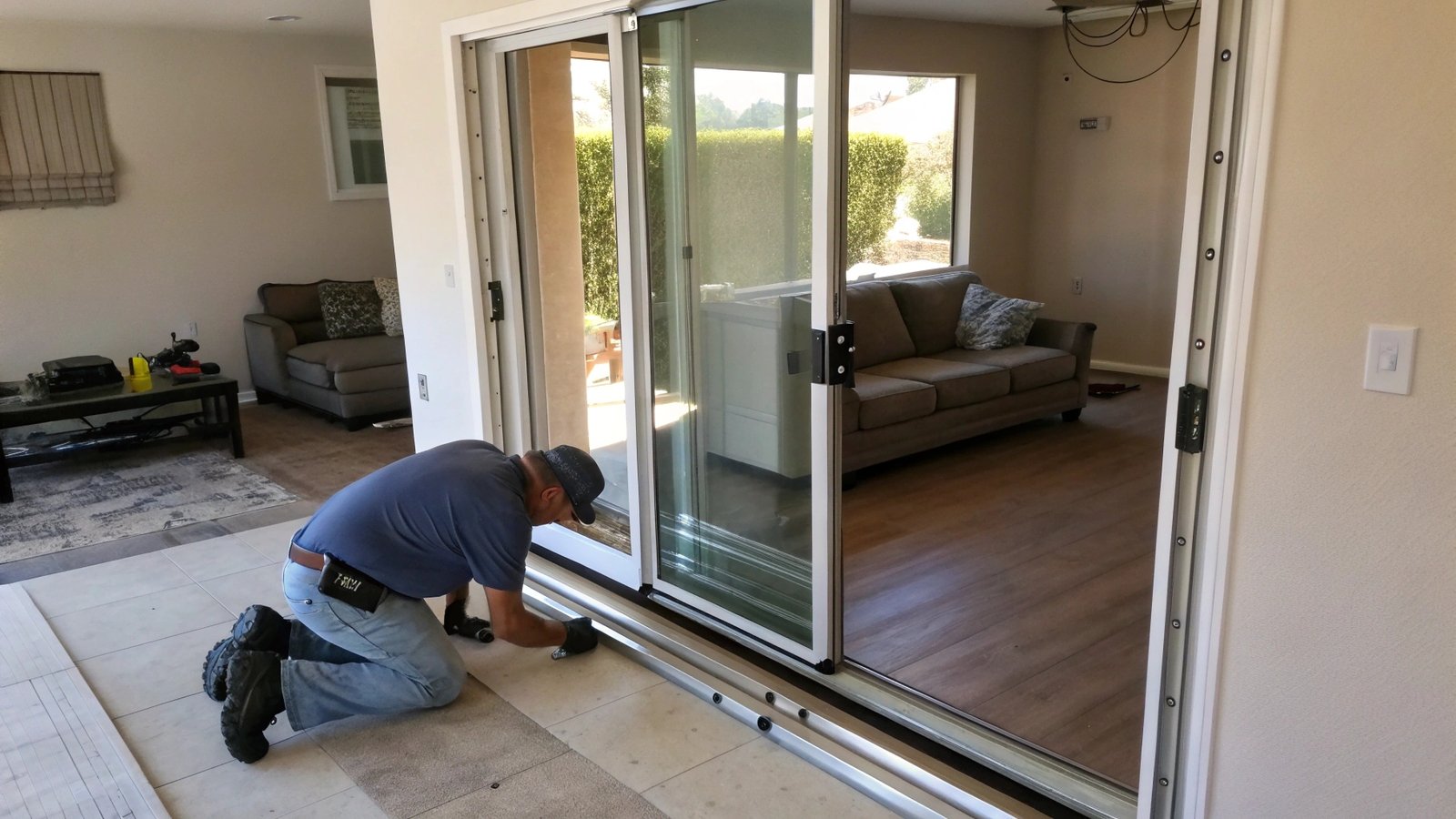
From my experience in manufacturing sliding door hardware, I can tell you that most problems start small. Simple maintenance can prevent major failures. The system’s performance depends heavily on the condition of its smallest parts.
Debris and Dirt
The track and rollers are the number one enemy of a smooth-gliding door. When dirt, dust, and hair accumulate in the bottom track, it acts like sandpaper against the wheels. This build-up increases friction, making the door hard to slide. Over time, this can wear down the rollers prematurely or even cause the door to jump off the track completely. A quick, regular cleaning with a vacuum and a damp cloth can prevent 90% of these issues.
Component Wear and Tear
Sliding door systems have moving parts, and moving parts wear out. The rollers, which carry the entire weight of the door, are especially vulnerable. The bearings inside the rollers can fail, causing a grinding noise and a bumpy ride. The track itself, usually made of aluminum, can get dented or bent if something heavy is dropped on it. High-quality components last longer, which is why we focus on durable materials in our hardware at opensliding. Choosing better rollers from the start saves money on future repairs.
| Problem Symptom | Primary Cause |
|---|---|
| Grinding Noise / Hard to Slide | Dirty Rollers & Track1 |
| Wobbly or Unstable Door | Worn or Broken Rollers2 |
| Door Jumps the Track | Bent Track or Misaligned Wheels |
| Door Doesn’t Lock Properly | Misalignment of the Door/Frame |
How do you fix a misaligned sliding door?
A misaligned door is a security risk because it will not close or lock correctly. This is a serious issue that affects safety and even lets drafts in, wasting energy.
You can fix a misaligned door by adjusting the roller screws, which are usually on the bottom edge of the door panel. Turning the screws clockwise raises that side of the door, while turning counter-clockwise lowers it. Make small adjustments until the door is level again.
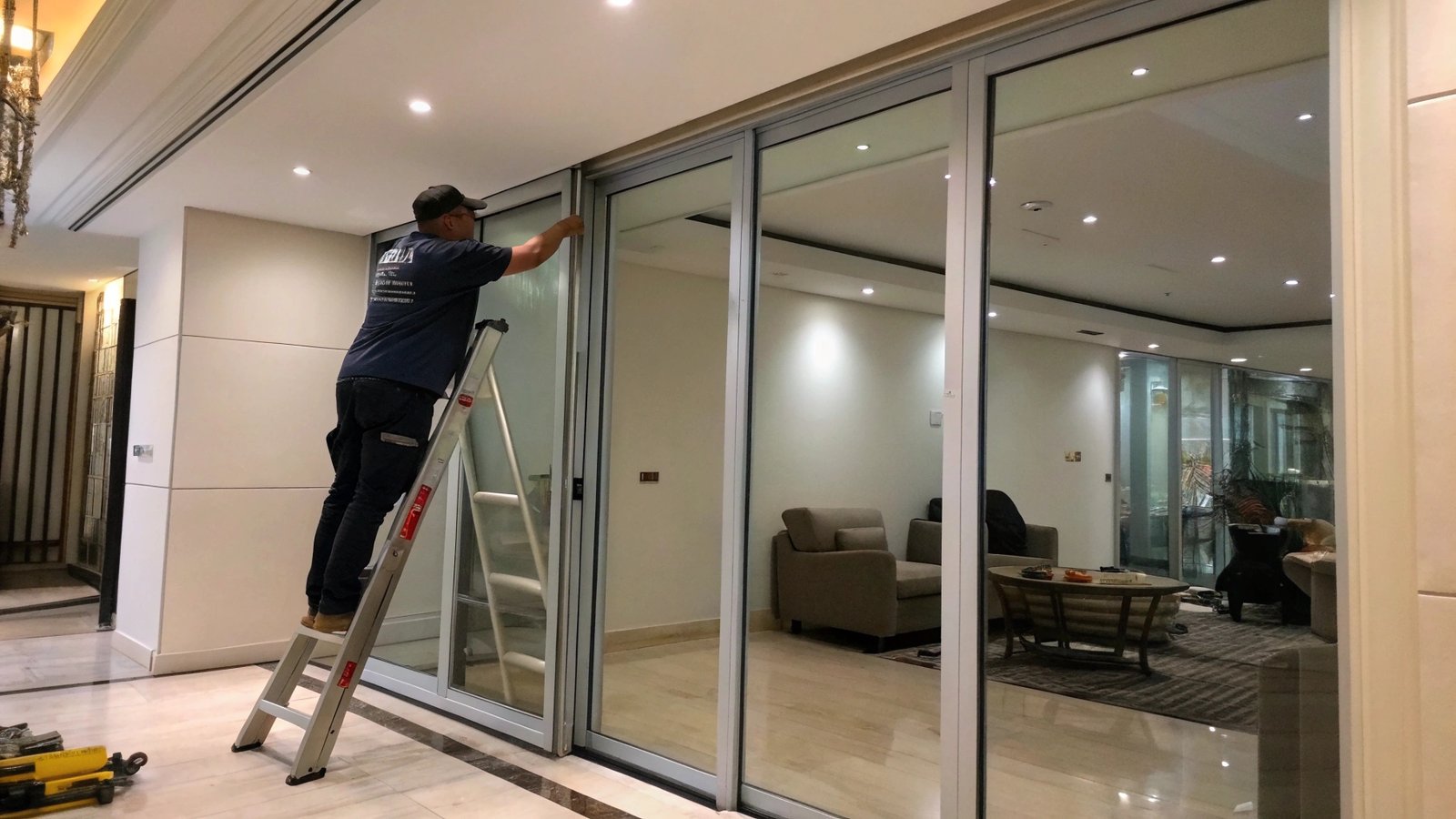
This is one of the most common adjustments needed for sliding doors. It is a simple procedure, but you need to be careful. I always recommend having a helper, especially with heavy glass or wooden doors. Trying to lift or balance a heavy door by yourself can be dangerous and may cause the door to fall.
The Adjustment Process
Here is a step-by-step guide to get your door perfectly aligned.
- Locate the Adjustment Screws3: First, find the adjustment access holes on the bottom of the door, on each side. Sometimes they are covered by small plastic caps that you can pry off with a flathead screwdriver. Inside, you will find the head of the adjustment screw.
- Use a Level: Place a carpenter’s level4 on top of the door frame to check its alignment. This will show you which side is too high or too low.
- Make Small Adjustments: Insert a Phillips head screwdriver into the access hole and turn the screw. Make only a quarter-turn at a time. Check the level after each small adjustment. You will likely need to adjust both sides to get the door perfectly straight.
- Test the Door: After you have adjusted the door, slide it back and forth a few times. It should move smoothly without any rubbing. Also, check that the lock latch aligns perfectly with the strike plate on the door jamb.
Why is my sliding door slanted?
You notice a clear, uneven gap at the top or bottom of your sliding door. A slanted door not only looks bad but also suggests a deeper problem is developing.
Your sliding door is slanted because the rollers are set at different heights. One side of the door hangs higher or lower than the other. This usually happens slowly as the rollers wear down unevenly or if the house foundation settles slightly over time.
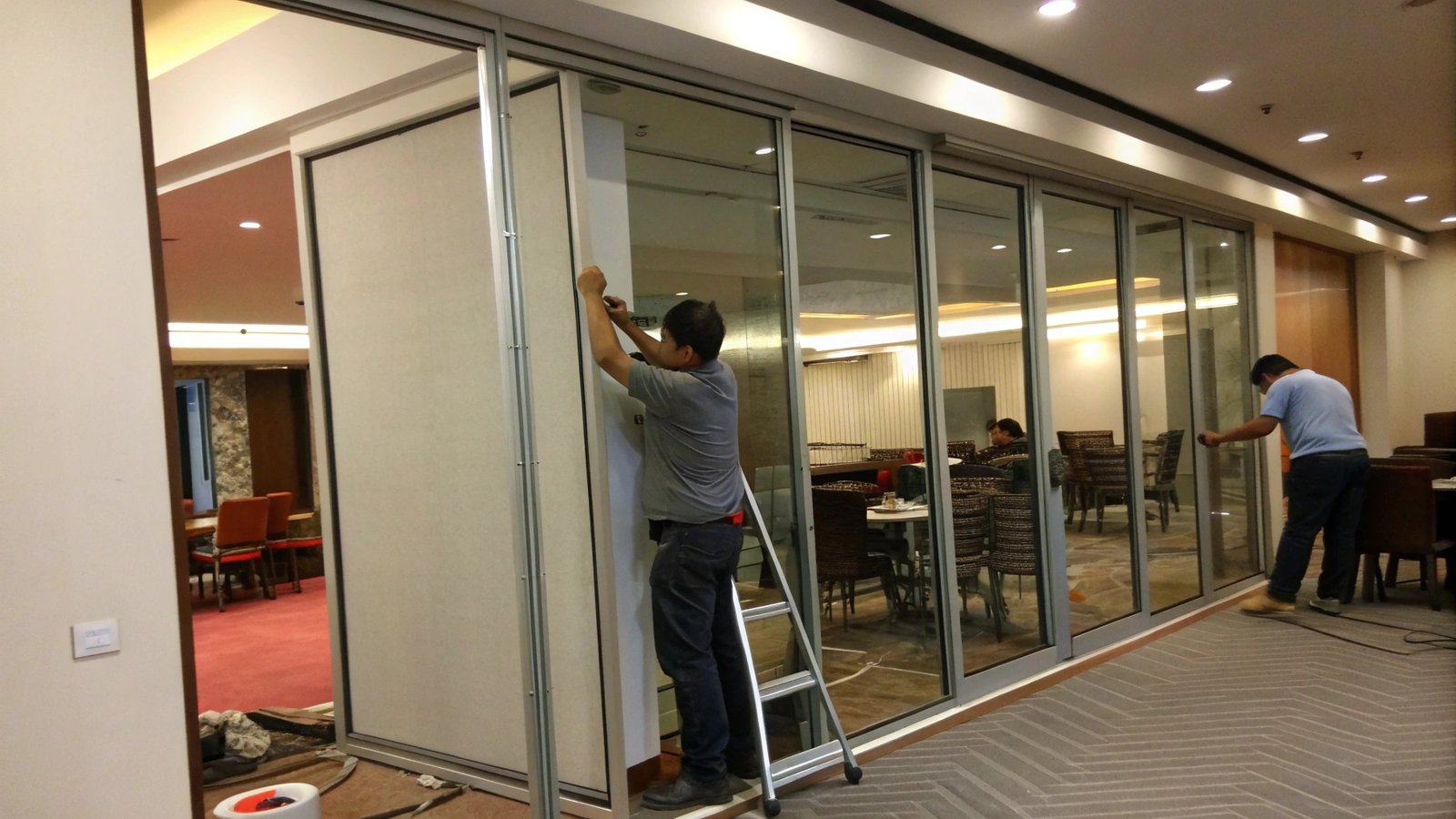
A slanted door is just a symptom of misalignment. In our B2B business, when a client like Jacky in Canada asks about this, I explain that it is a mechanical issue related to balance and wear. The door itself is not bent, but its support system is failing.
Uneven Roller Wear5
The roller on the leading edge of the door—the side that opens first—often carries more load and experiences more movement. Because of this, it can wear out faster than the roller on the back edge. As the roller material degrades or the bearings fail, that side of the door will drop slightly, causing the entire panel to slant. Using high-quality, durable rollers from the start can help ensure they wear at a more even rate.
Foundation Settling
All buildings settle over time. This movement can cause the door frame to become slightly out of square. Sliding door adjustment mechanisms are designed to compensate for minor shifts. However, if the settling is significant, the adjustment screws may reach their limit, and you will see a slant that you cannot fix with a simple adjustment.
Improper Installation6
A door that was not installed perfectly level from the beginning will eventually start to show problems. The initial flaw puts uneven stress on the rollers and track, accelerating wear and tear. This is why we always stress to our wholesale customers that the best hardware in the world cannot make up for a poor installation. A proper, level installation is critical for long-term performance.
How to fix a bent sliding door track?
You notice the door bumps, sticks, or even jumps at the same spot every time you slide it. A bent track can quickly ruin the rollers and make the door impossible to use.
For minor bends, place a block of wood over the dent and gently tap it with a hammer to straighten the track. For major damage or creases, the track should be replaced. Trying to fix a severely bent track can weaken it and create more problems.
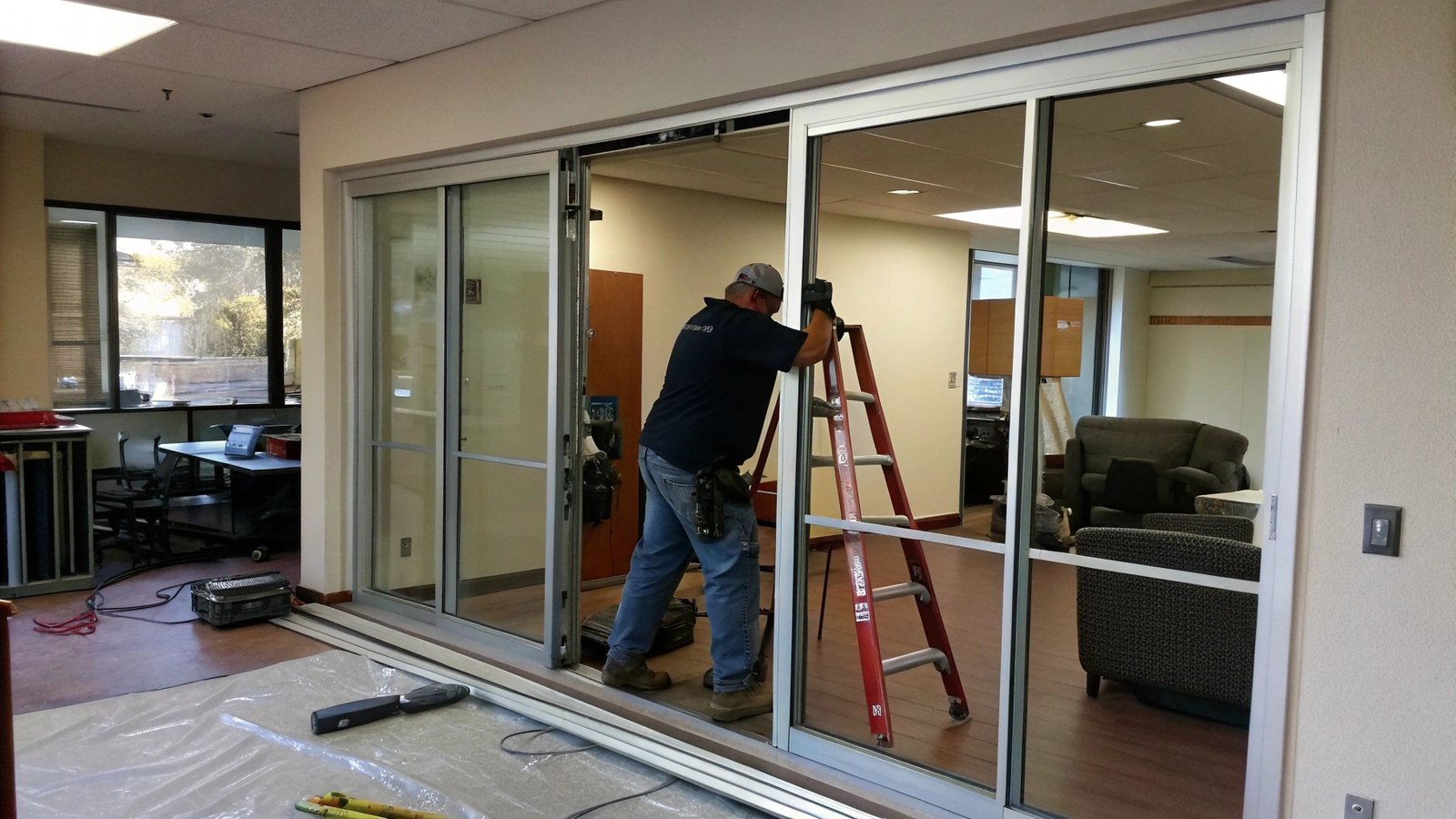
Dealing with a bent track requires a careful decision: repair or replace? As a manufacturer, I always advise choosing the option that guarantees the best long-term performance. A faulty track will destroy a brand-new set of rollers.
Assessing the Damage
Before you do anything, you must clean the track thoroughly. Use a vacuum to remove all loose debris and wipe it down. Now, inspect the bend closely. Is it a small, single dent, perhaps from something heavy being dropped on it? Or is the track warped or twisted over a longer section? The type of damage will determine the solution.
The Repair Method
If you only have a small dent, you can often fix it. Take a small block of wood and place it directly over the bent section of the track. Use a rubber mallet or a hammer to tap the block of wood gently. Do not hit the track directly with the hammer, as this will cause more damage. After a few taps, check the straightness with a ruler or straight edge. The goal is to make the track walls parallel again.
When to Replace
If the track is severely bent, has a sharp crease, or is cracked, you must replace it. A compromised track can never be restored to its original strength and shape. Trying to force it straight will only weaken the metal. In these cases, replacement is the only reliable and cost-effective solution. It protects your investment in the door and new rollers, ensuring the entire system functions as it should.
Conclusion
A crooked sliding door is usually from track or roller problems. Regular cleaning, easy roller adjustments, and quick repairs will keep your sliding doors working smoothly for many years.
Explore effective cleaning techniques to maintain your sliding door’s functionality and extend its lifespan. ↩
Learn how to spot roller issues early and replace them to avoid costly repairs and ensure smooth operation. ↩
Understanding how to adjust screws can ensure your door functions smoothly and lasts longer. ↩
Learning to use a carpenter’s level correctly can help you achieve perfect door alignment and prevent future issues. ↩
Understanding the causes of uneven roller wear can help you prevent future issues and maintain your sliding door’s functionality. ↩
Exploring the impact of improper installation can guide you in ensuring a flawless setup for your sliding doors. ↩

